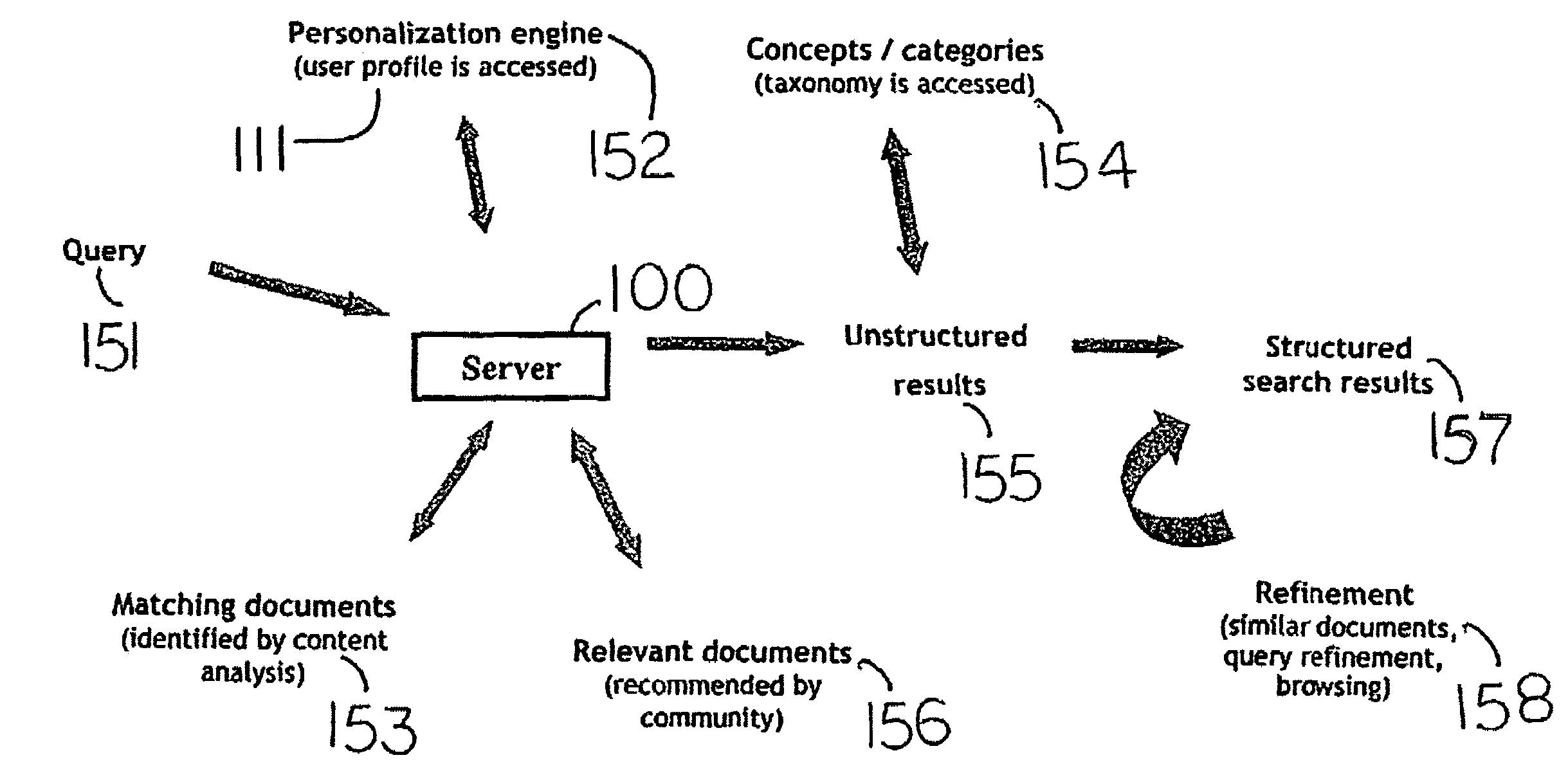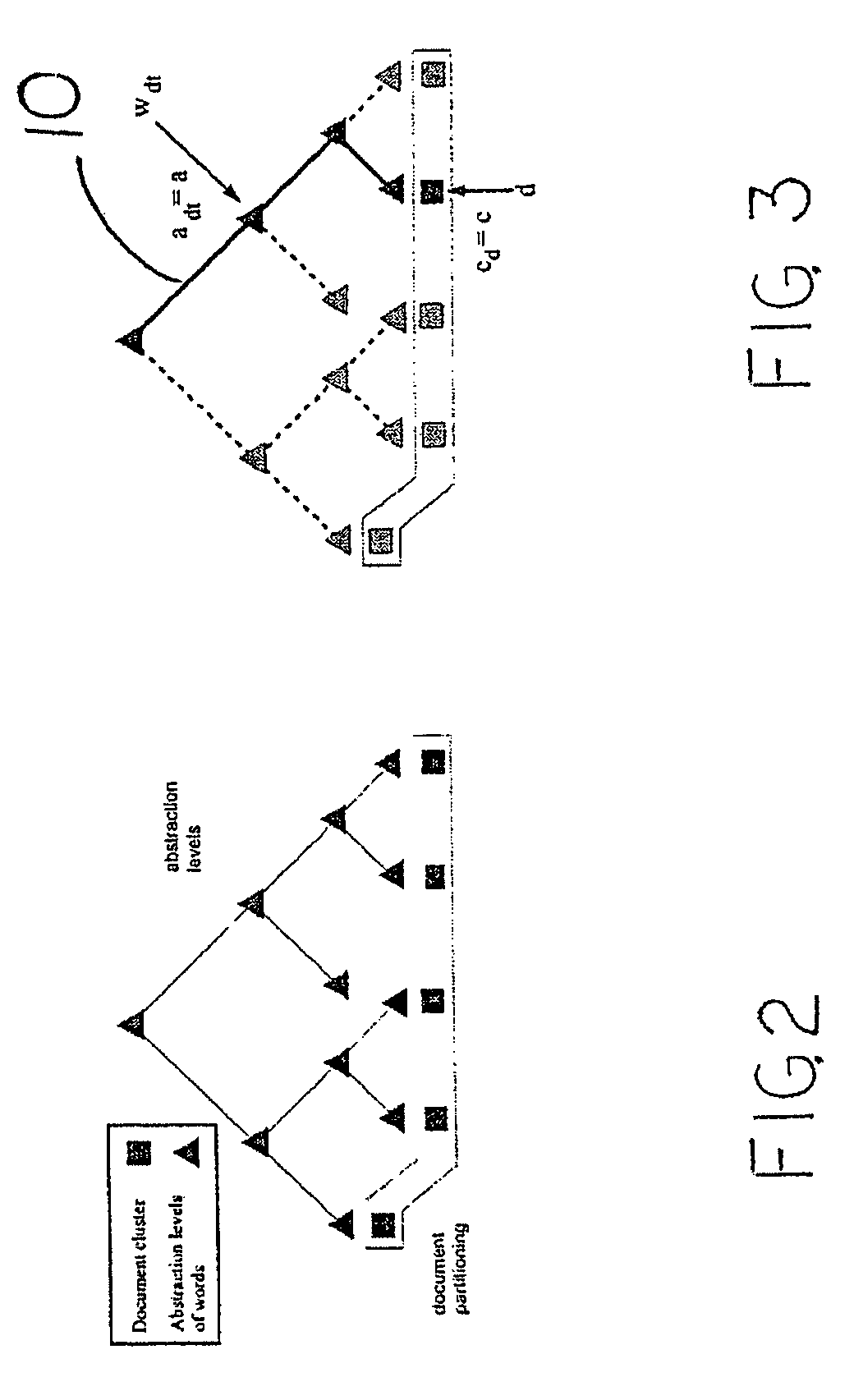System and method for personalized search, information filtering, and for generating recommendations utilizing statistical latent class models
a statistical latent class and search technology, applied in the field of personalized search engines, can solve the problems of increasing the difficulty of accessing relevant information while suppressing the overwhelming mass of irrelevant data, difficult to formalize in general terms, and the risk of constant information overload, so as to facilitate more efficient information gathering and improve the accuracy of processing user's query
- Summary
- Abstract
- Description
- Claims
- Application Information
AI Technical Summary
Benefits of technology
Problems solved by technology
Method used
Image
Examples
Embodiment Construction
[0024]The following detailed description sets forth preferred embodiments for a search engine. This description should not be interpreted as limiting the use of the invention to this particular application. Rather, the present invention may be utilized for various functions including information retrieval, data mining, as a recommender system, and to identify user communities. Further, reference is made to the accompanying drawings, figures and equations, which, in conjunction with this detailed description, illustrate and describe the search engine. The invention may be embodied in many different forms and should not be construed as limited only to the disclosed embodiments and equations.
Generally
[0025]The information available in typical information filtering applications is highly diverse. Thus, we are first concerned with abstracting away from this diversity in order to identify a few fundamental types of observation data. Co-occurrence data refers to a domain with two or more f...
PUM
 Login to View More
Login to View More Abstract
Description
Claims
Application Information
 Login to View More
Login to View More - R&D
- Intellectual Property
- Life Sciences
- Materials
- Tech Scout
- Unparalleled Data Quality
- Higher Quality Content
- 60% Fewer Hallucinations
Browse by: Latest US Patents, China's latest patents, Technical Efficacy Thesaurus, Application Domain, Technology Topic, Popular Technical Reports.
© 2025 PatSnap. All rights reserved.Legal|Privacy policy|Modern Slavery Act Transparency Statement|Sitemap|About US| Contact US: help@patsnap.com



